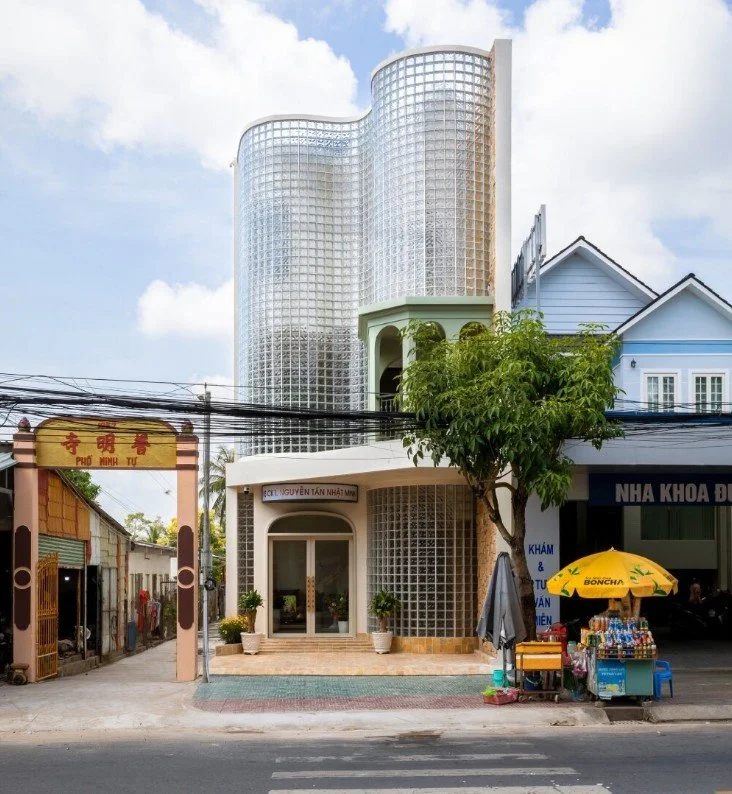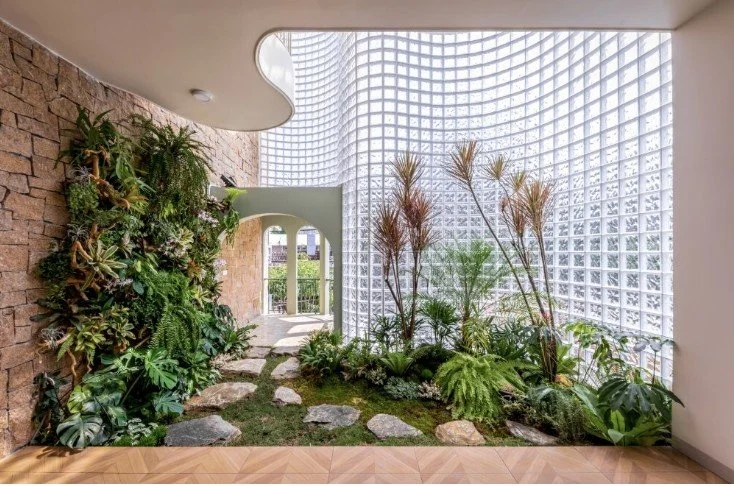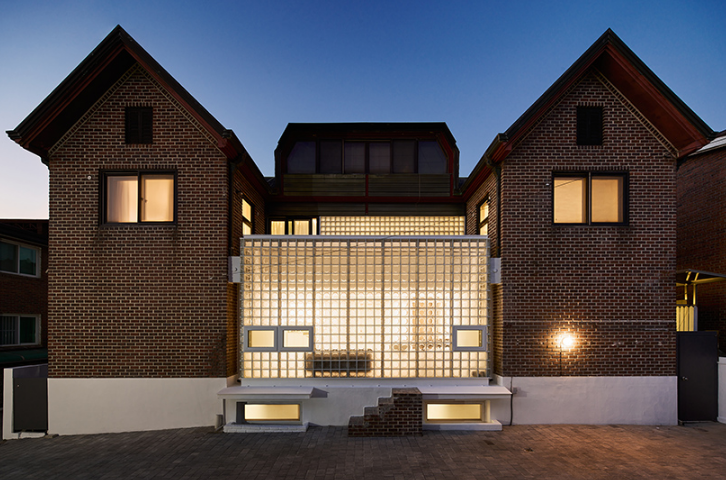Illuminated walls: How glass bricks have shaped modern design
Glass bricks were popularised in the 1930s towards the end of the Art Deco movement. Nowadays, the material is suddenly seeing a popular revival in modern architecture, becoming a product of fascination and nostalgia.
Technology of glass majorly developed in the mid 20th century, initially being experimented with in the early 1930s: as Vanessa Fernandez puts “While the architectural avant- garde continued to preach the gospel of the glass building, failures such as Le Corbusier’s Cité du Refuge in Paris in 1936—where a single-glazed,south-facing facade left dormitory rooms unbearably hot in summer and cold in winter—exemplified the real limitations that glass offered.”
Indeed, until the limitations of heating could be solved, glass bricks were scarcely used other than for gimmicky design; more aesthetically for cafes rather than as a load-bearing material, therefore limiting its potential.
This notion is expressed in the article, ‘Insulation with Vision: The Development of Insulated Glazing, 1930–1980" by Daniel A. Barber: “Glass-block walls became a signature of the streamlined moderne style in the 1930s, appearing in otherwise “windowless” buildings to provide daylight in climate-controlled factories, theaters, offices, and residences… Chicago architect George Keck was among the converts to glass block: his Bruning residence in Wilmette, Illinois, was widely praised for its signature round staircase, clad in a half-cylinder of light-diffusing,insulating Insulux.”
Figure 1: Herbert Bruning House, Wilmette, Illinois, USA, designed by Keck & Keck in 1936
Glass bricks began to become popular. This was further magnified as while average prices for building materials rose 150 percent from the mid-1920s to the mid-1950s, prices for glass fell in real terms over the same period. The glass brick was not only an aesthetic desire beginning in the 1950s, it became feasible and even economically preferable to stone, brick, and other cladding materials. Slowly, appreciation for the the material dwindled over many years since then, being replaced by modern trends such as brutalism. Today, in the modern 21st century, architecture's relationship with glass bricks is adapting.
In the contemporary architectural landscape, glass bricks have had a revival being used in modern practices to create texture and diffuse light. This is supported by science as recent innovations have allowed the material to become more thermally insulative, therefore improving energy efficiency and enhancing their functionality, they can now be produced in different colours, sizes and even patterns. Recent enthusiastic projects utilising the material, have brought further popularity to its cause. I conclude with some modern examples:
Figure 1: Da vang studio, crystal pavilion house in Vietnam phtograhped by MinqBui
Figure 2: Interior of Crystal pavilion house in Vietnam photograhped by MinqBui
Figure 3: Glass block surfaces by studio heech enclose brick structure in Seoul. Image by Studio Heech
Figure 4: Coco House by Duy Le Architects photographed by Trieu Chien
References
Leslie, T. (2018). The Development of Insulated Glazing, 1930–1980. APT Bulletin: The Journal of Preservation Technology, 49(4), 23–32. JSTOR. https://doi.org/10.2307/26632385
Pilkington Brothers Ltd, Insulight Glass Bricks, 1939
Pilkington Brothers Ltd., St Helens
Requena-Ruiz, I. (2016). Building Artificial Climates. Thermal control and comfort in Modern Architecture (1930-1960). Ambiances, 2. https://doi.org/10.4000/ambiances.801
Wigginton, M. (1996). Glass in architecture. Phaidon.




